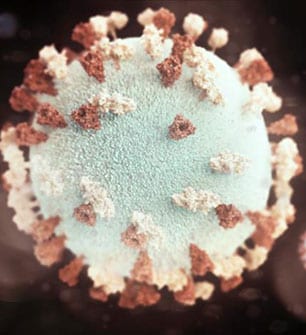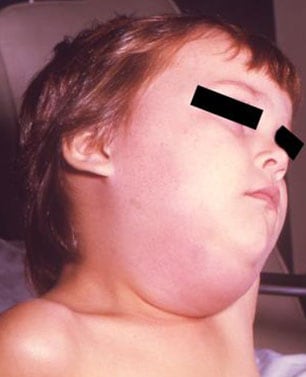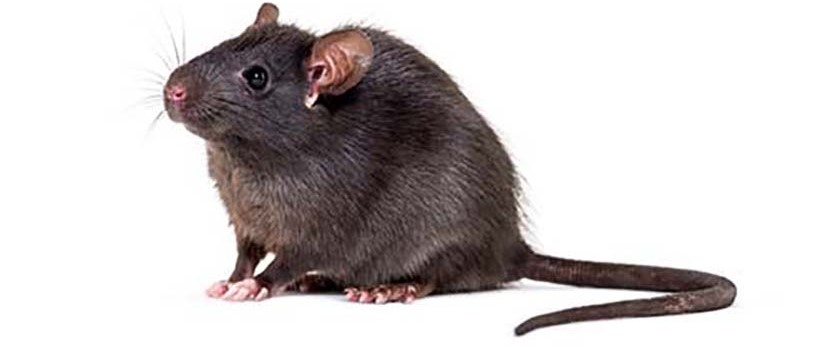Over the past couple of months, I would say my perceptions of evolution has changed. I obviously new evolution was real and there was evidence to back the theory up, but it was interesting to read and learn about the topic as a whole. The main thing that I have learned in this course is how to look at something and try to find an explanation of how it got from point A to point B. It was fun seeing how certain organisms evolved differently based off of a variety of factors. I also learned that coding is DEFINITELY not my strong suit. However, I enjoyed learning how to code some simpler things as well as using the code to interpret the data. I am taking away a whole boatload of information I learned as well as the passion of figuring out puzzles!
Emmary's Blog: Evolution
Tuesday, December 7, 2021
Friday, December 3, 2021
Module 12: Disease
My disease that I picked for the blog post is the mumps. Mumps is caused by a virus. Some of its symptoms includes muscle aches, tiredness, loss of appetite, fever, and swelling of salivary glands. This swelling is what causes puffy cheeks and a sore jaw. It spreads by direct contact with saliva or droplets from a throat, nose, or mouth. So, if someone coughed, sneezed, shared a cup with someone, or participated in other close contact contact activities, they have a high chance of spreading the disease. It is recommended that people who have the mumps should stay home until their symptoms go away and are cleared by a doctor. There are not too many complications that arise with mumps, but occasionally in adults there will be inflammation that occurs in the body that can cause some problems. There is a vaccination for mumps. The vaccination program was started in 1967. It involves 2 doses. Most people get these when they are babies. With the vaccination, there is an 88% reduction in risk for mumps, and a 78% reduction if you just get the one shot.
Due to the fact that there is a vaccine, there are not a lot of people that get the mumps nowadays. However, I was able to find where there was multi-state outbreak in 2006 that had 6,500 reported cases. The people most affected by this outbreak were college-aged students in the Midwest! It makes sense that there would be an outbreak in a college. There are a lot of people participating in a lot of close contact, (dorms, etc). So, the more people there are in a small location, the higher likelihood there is to spread the mumps. One case could quickly turn into many
Below is a picture of someone with the mumps so you can see what it looks like. Additionally, all my information was from the CDC website and the following study.
(https://www.cdc.gov/mumps/index.html)
(https://www.nejm.org/doi/full/10.1056/nejmoa0706589)


Thursday, November 11, 2021
Module 11: Speciation
In order for something to become a new species, there has to be a big enough genetic difference that occurs that makes mating with each other unsuccessful impossible. When a new species is formed, it is called speciation. When I was looking up the different way speciation can occur, I found four modes that seemed the most important that I will list below.
Allopatric: new species formed from geographically isolated populations
Peripatric: new species formed from a small population isolated at the edge of a larger population
Parapatric: new species formed from a continuously distributed population
Sympatric: new species formed from within the range of an ancestral population
(Link: https://evolution.berkeley.edu/modes-of-speciation/)
If you are still a little confused, I found this chart to be helpful! In fact, the picture comes from a set of slides created by a professor(?) at the University of Washington. It is chalked full of examples of all these modes as well as a more in depth analysis of what they are!
(Link: http://courses.washington.edu/gs453/lectures/lec23.pdf)
(Edit: it seems like this picture is not loading. It is located on slide 14 on the powerpoint. My bad!)
After reading a bit more into these modes of transportation, I definitely think the speeds of which they happen are all different. As for the fastest mode, I think it would have to be allopatric speciation. This seems to be the mode that happens the most naturally, so therefore it's probably naturally selected. Plus, this only occurs when there is a physical barrier. It seems that once a barrier is put in place, things quickly evolve to be different. Additionally, when a population is split up, it reduces the population size. This means that mutation has a much bigger effect, and can gain a foothold quicker in the population, or that's what I think at least!)
Monday, November 8, 2021
Module 10: Courtship
The Microphis deocata, a pipefish species, is an example of sexual dimorphism, as mentioned in the instructions. I did not know exactly what this term meant, so I looked it up. According to Oxford Languages, sexual dimorphism is the, "distinct difference in size or appearance between the sexes of an animal in addition to difference between the sexual organs themselves" (Oxford Languages). In the video that we were shown, the female had a round protrusion coming off of her, while the male did not. Usually, males have the more interesting or "pretty" features, as they are trying to attract a female in order to mate with them. According to Darwin, sexual selection is responsible for traits specific to a gender. Sexual traits can be divided into two categories: traits that help create a weapon to fight off other competition, or a trait that helps to improve the attractiveness of an animal, (these traits don't have any purpose besides ornamentation), (Scientific American). In the case of the Microphis deocata, I think that the trait in the female is just used for ornamentation and not as a weapon to fight other females off.
I made a hypothesis before looking at anything about the species of pipeline fish. Below is my hypothesis.
The female Microphis deocata would have the more colorful features with the reason that maybe there aren't many males in the population, so if the females want to mate, they have to stand out. This would make sense on why the males don't need to stand out. If there is a small number of them, then they would not need to compete like they normally might need to.
After making my hypothesis, I looked a little more into the Microphis decoata. In turns out that the male fertilizes the egg in the female, and then the female puts the fertilized egg into the males pouch, (like a seahorse!), (WalterCrews). So, the males are in short supply in this case because they are putting in the extra work of intubating the baby pipefish. So, since the roles of "pregnancy" are reversed, it would make sense that the sex that had the stand out traits would switch too!
Sources:
Oxford Languages: https://www.oxfordlanguages.com
Scientific American: https://www.scientificamerican.com/article/why-are-male-birds-more-c/
WalterCrews: https://praquatics.com/forums/threads/rainbow-belly-pipefish-microphis-deocata.4136/
Thursday, October 28, 2021
Module 9: Favorite Trait
One trait that I have always found kind of cool is that of the skin of an African Spiny Mouse. These animals have very thin skin. Because of this, it heals faster than a normal mouse's skin. Specifically, two species native to East Africa, A. kempi and A. percivali, are able to get rid of unwanted skin when they are trying to escape capture from predators. Their wounds may look really bad at first, but within twenty four hours after the injury, the wound shrinks significantly. This is because their skin grows twice as fast as other wounds, (that are similar) in other mice. How cool is this! (Britannica) It would be interesting to see what exactly causes this, so we could see if somehow we could replicate this in humans. This would mean quicker healing skin injuries and a smaller chance of scarring. This is definitely something that would be intriguing to look in to!

(Here is a picture of some African Spiny Mice taken by Athanasia C Tzika, Univseriy of Kentucky, and University of Nairobi)
Anyways, the second part of the prompt for this blog post asks what adaptations there have been for this specific trait. After doing some research, I found the following information. According to Ashley Seifert, a developmental biologist at the University of Florida in Gainesville, she mentioned that it is rather unlikely that these mice's skin evolved a new way of regrowing tissue, but instead they probably have had genes that direct regeneration switched back on, (Nature). Ashley compared this gene regulation to salamanders, as I guess they have a similar mechanism! (Nature). Obviously, the mice would have had to evolve in order to get to the point where the gene was switched on. Since I could not find any information on this, I am unsure on how we could do this. Does anybody have any ideas? I also found that the fast skin regeneration could be caused by microphages that the mice have, (elifesciences). Which explanation do you think is the right one? Or do you have another hypothesis? Additionally, do you think that studying these mice can help us find a way to help heal human injuries faster? I have listed my sources below so you can take a look at the information.
Sources:
https://www.nature.com/articles/nature.2012.11488
https://www.britannica.com/animal/African-spiny-mouse (1)
https://elifesciences.org/articles/24623
Thursday, October 21, 2021
Module 8: Genetic Variation
The prompt for this week asked why selection doesn't take out genetic variation. As we have learned from past modules in this class, there are many reasons why selection doesn't always have the final say. Factors such as migration, genetic drift, environmental factors, mutation, etc., are just a few of the diverse mechanisms that are able to explain why variation in genetics in populations stick around. As one can see, selection is not the only tool evolution uses.
Looking specifically at mutation and genetic drift, I believe these two mechanisms help the most when it comes to maintaining variation. They both happen randomly, which means the gene pool is ever changing. With mutations, it can be positive or negative, but regardless, it means that there is genetic variation in the population, as new genes are popping up in offspring. Additionally, some mutations can be neutral or silent. Selection usually is based off of traits you can see, (not always though), so it would be hard to get rid of these neutral mutations when selection can't pick off certain organisms based off of these mutations. Genetic drift also ensures variation by bringing in fresh genes from outside the population.
Now that we know how variation still occurs even though selection is a thing, I think it is important to talk about why it is so important. If there was no genetic variation, (let's just say in a certain population), there would be a lot of inbreeding, which in turn can cause diseases and other developmental problems, (module 6 discussion talks all about this). Another reason why genetic variation is important is adaptability reasons. If a population all had the same genes, and some environmental crisis happened in their habitat, they would ALL die. If there was some variation, then there would be a likelihood that some might survive due to a genetic trait that they possess that might give them an advantage. For example, a drought happens. If there was a population of rats that was all white, then they would all be picked off. However, if the rat population had variation in fur colors, (let’s say brown and white), then the rats with the color that blends in with their environment would have a higher chance of surviving.

(Picture from https://www.domyown.com/all-about-rats-a-764.html)
Thursday, October 14, 2021
Module 7: Quick Check-Up
Module 13: Reflection
Over the past couple of months, I would say my perceptions of evolution has changed. I obviously new evolution was real and there was evide...
-
To understand the benefits and costs of inbreeding, I think that it is important to define the word. Inbreeding is, " the interbreeding...
-
In order for something to become a new species, there has to be a big enough genetic difference that occurs that makes mating with each othe...
-
Mutation Rates: To answer the question of, "do you think mutation rates evolve?", I think that yes, they do evolve! Darwin talks o...